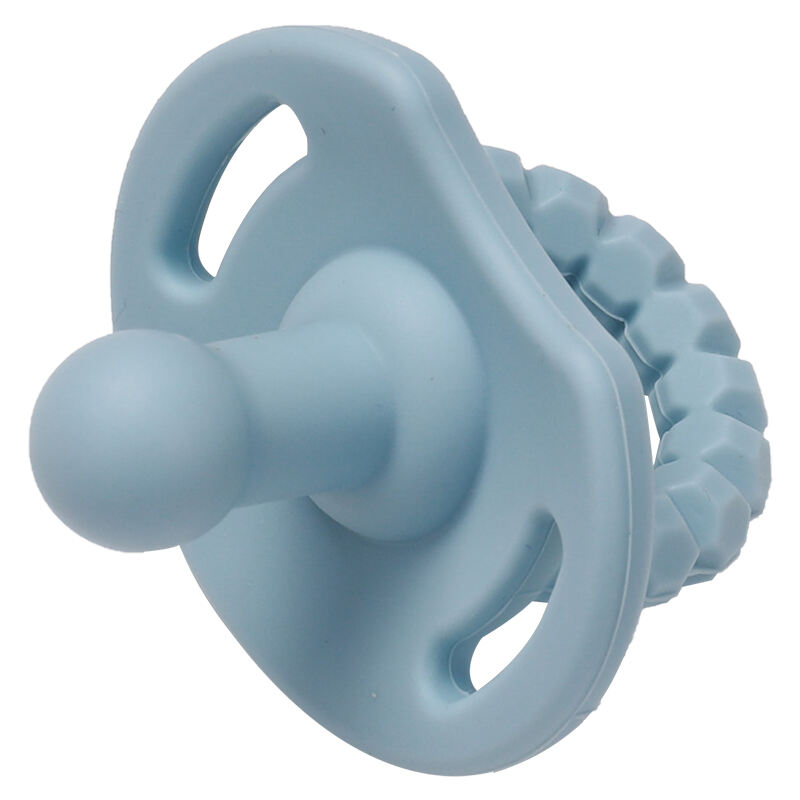Guia Essencial para Escolher a Melhor Chupeta para Bebê
Receber um recém-nascido traz inúmeras decisões para os pais, e escolher a chupeta certa está entre as mais importantes. As chupetas para recém-nascidos desempenham um papel fundamental no conforto e na tranquilização dos bebês nos primeiros meses de vida. Compreender as características, aspectos de segurança e benefícios dos diferentes tipos de chupetas ajuda os pais a fazerem escolhas conscientes para os seus pequenos.
As chupetas modernas evoluíram significativamente em relação aos seus primeiros designs, incorporando materiais avançados e características bem pensadas que priorizam o conforto e a segurança. Seja você está se preparando para a chegada de um novo bebê ou buscando soluções mais eficazes para acalmar seu filho, este guia completo o ajudará a navegar pelo mundo das chupetas para bebês.
Compreendendo os Fundamentos e Benefícios das Chupetas
A Ciência por Trás do Conforto
Os bebês possuem um reflexo natural de sucção que vai além do horário das refeições. Esse instinto, presente desde o nascimento, ajuda-os a se sentirem seguros e calmos. As chupetas para recém-nascidos aproveitam essa tendência natural, proporcionando conforto durante períodos de irritação, hora do sono e momentos de angústia. O movimento rítmico de sucção libera endorfinas que ajudam os bebês a se acalmarem e regularem suas emoções.
Pesquisas mostraram que o uso de chupetas pode reduzir o risco da Síndrome da Morte Súbita do Lactente (SIDS) quando utilizadas durante o sono. A ação de sucção ajuda a manter as vias aéreas abertas e pode impedir que os bebês adormeçam excessivamente. Além disso, as chupetas podem ajudar no desenvolvimento adequado da coordenação dos músculos bucais e fortalecer os músculos da mandíbula.
Principais Características a Considerar
Ao avaliar chupetas para recém-nascidos, algumas características essenciais merecem atenção. O tamanho do escudo deve ser grande o suficiente para impedir que a chupeta entre inteiramente na boca do bebê, mas ventilado para permitir a circulação do ar. O formato da tetina é muito importante – alguns bebês preferem designs ortodônticos que favorecem a posição natural da língua, enquanto outros se adaptam melhor aos formatos tradicionais e redondos.
A composição do material é outra consideração fundamental. A silicone de grau médico oferece durabilidade e limpeza fácil, enquanto o látex natural pode atrair pais que buscam opções ecológicas. Procure modelos com design em uma única peça que impeçam a água de ficar presa no interior, reduzindo o risco de crescimento bacteriano.
Recomendações Top para Chupetas por Faixa Etária
Designs Específicos para Recém-Nascidos
Para os bebês menores, chupetas especialmente projetadas contam com bicos extra-pequenos e escudos leves. Essas chupetas para recém-nascidos geralmente possuem escudos curvados que se afastam do rosto, garantindo uma ventilação adequada e evitando irritações na pele. Alguns modelos vêm com recortes especiais para acomodar a respiração nasal e o desenvolvimento das feições faciais.
As marcas líderes oferecem opções de qualidade hospitalar que passam por testes rigorosos de segurança e durabilidade. Essas chupetas costumam apresentar bicos simétricos que se acomodam naturalmente na boca do bebê, independentemente da orientação, facilitando a permanência na boca dos recém-nascidos.
Opções de Transição para Bebês em Crescimento
À medida que os bebês crescem, suas necessidades em relação à chupeta evoluem. Chupetas de transição possuem bicos ligeiramente maiores e escudos mais robustos, adaptando-se às estruturas bucais em desenvolvimento. Muitas marcas oferecem sistemas por etapas que acompanham o crescimento do bebê, garantindo adequação e conforto ao longo do primeiro ano.
Alguns designs inovadores incorporam alças ou suportes que ajudam os bebês a segurar as chupetas de forma independente. Este recurso apoia o desenvolvimento das habilidades motoras, ao mesmo tempo que facilita a localização de chupetas caídas. Procure modelos com construção em duplo material, que ofereçam firmeza para a estrutura e maciez para o conforto.
Diretrizes de Segurança e Manutenção
Protocolos de Limpeza Adequada
Manter as chupetas limpas é essencial para a saúde do seu bebê. Antes da primeira utilização, esterilize as chupetas novas fervendo-as por cinco minutos ou utilizando um esterilizador a vapor. Para a limpeza diária, lave as chupetas com água morna e sabão, e enxágue-as bem. Evite métodos de limpeza que possam danificar o material ou aprisionar água dentro da tetina.
Estabeleça uma rotina regular de inspeção para verificar sinais de desgaste, descoloração ou danos. Substitua as chupetas a cada dois meses ou antes, se notar qualquer deterioração. Mantenha várias chupetas limpas sempre disponíveis e nunca as mergulhe em substâncias doces ou tente limpá-las com a boca.
Quando Substituir e Descartar
Mesmo as chupetas de maior qualidade para recém-nascidos exigem substituição regular. Fique atento a sinais de desgaste, como rasgos, rachaduras ou superfícies pegajosas. Essas imperfeições podem abrigar bactérias e representar riscos de engasgamento. Se a chupeta ficar descolorida ou desenvolver um odor incomum, substitua-a imediatamente.
A maioria dos especialistas recomenda começar a eliminar gradualmente o uso da chupeta entre os 6 meses e 1 ano de idade para prevenir problemas dentários e apoiar o desenvolvimento da fala. No entanto, cada criança é diferente, e essa cronologia deve ser discutida com seu pediatra.

Perguntas Frequentes
Quantas chupetas devo ter para meu recém-nascido?
Recomenda-se ter pelo menos 4 a 6 chupetas para recém-nascidos. Isso permite que você sempre tenha chupetas limpas disponíveis enquanto outras estão sendo lavadas ou esterilizadas. Mantenha extras em diferentes locais, como na bolsa de fraldas, no carro e em vários cômodos da sua casa.
Qual é o melhor momento para introduzir uma chupeta para meu bebê?
Para bebês amamentados no seio, espere até que a amamentação esteja bem estabelecida, normalmente por volta das 3 a 4 semanas de idade. Para bebês alimentados com mamadeira, as chupetas podem ser introduzidas desde o nascimento. Consulte sempre seu profissional de saúde para obter orientações personalizadas com base nas necessidades específicas do seu bebê.
O que devo fazer se meu bebê recusar as chupetas?
Nem todos os bebês aceitam chupetas, e isso é perfeitamente normal. Se o seu bebê recusar chupetas, experimente diferentes marcas ou formatos, já que alguns bebês têm preferências fortes. Nunca force a utilização de uma chupeta e lembre-se de que alguns bebês encontram outros métodos de autoconforto que funcionam melhor para eles.

